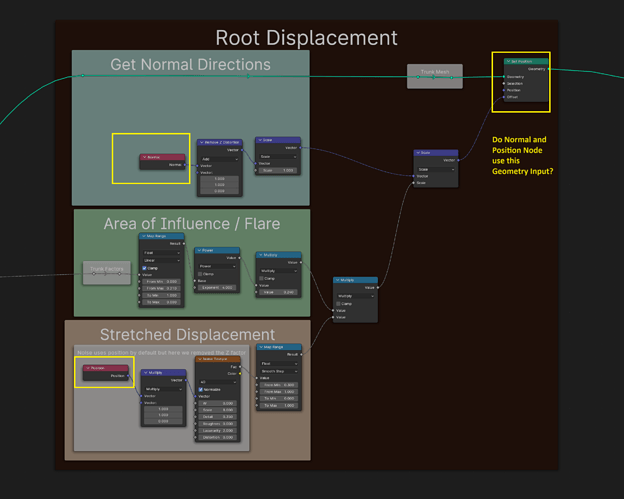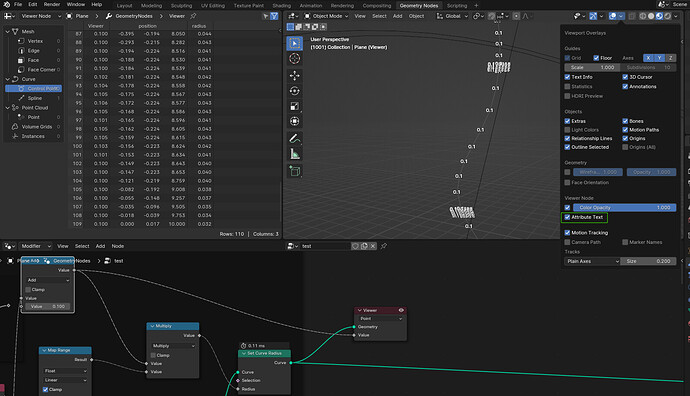Hey there,
While I was watching the Distorting the Trunk to Add Roots lecture I was wondering if I understood reading geometry nodes correctly, so this is not a question directly about the lecture, but rather about geometry nodes in principle.
What I have been wondering about is how to properly read output only nodes, like spline parameter, Normal, Position, etc., specifically where the normals or positions come from which they output.
So imagine this example from the lecture linked above:
Do I understand correctly that both the position and the normal node operate on the geometry thats input at the very top right with the set position node?
Another example would be here:
Do I understand correctly that the first spline parameter and both named attributes read their values from the “Adapt Trunk and Branches Radius” Curve input pin? And if so the second spline parameter would then read its values from the “Capture Trunk Factors” Geometry input pin, is that correct?
I somehow found that less confusing when working with procedural materials in Stephens other course.
Thanks in advance!





